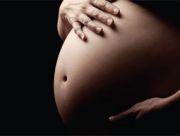Article
Pulse Oximetry Neonatal Screening Can Save Lives at Low Cost
Author(s):
A statewide neonatal screening program in New Jersey designed to detect critical congenital heart defects (CCHDs) using pulse oximetry has been shown to save lives while putting little burden on hospital staff, according to a report from the US Centers for Disease Control and Prevention (CDC).

A statewide neonatal screening program in New Jersey designed to detect critical congenital heart defects (CCHDs) using pulse oximetry has been shown to save lives while putting little burden on hospital staff, according to a report from the US Centers for Disease Control and Prevention (CDC).
New Jersey was the first state to start this program in August 2011 after it was recommended by the US Health and Human Services Secretary’s Advisory Committee on Heritable Disorders in Newborns and Children. In January 2012, the CDC assisted the New Jersey Department of Health (NJDOH) in the assessment of the program.
Out of 52 birthing facilities in New Jersey, a sample of 11 was selected. Staff interviews were conducted to assess screening and data collection processes, data flow and tracking procedures, electronic medical records, and capacity to report data to the NJDOH. All 11 facilities screened newborns for CCHDs.
After the first 3 months of program implementation, 98.2% of 25,214 newborns were screened. Hospitals reported data on 12 newborns with positive screening results. Two neonates were newly diagnosed with CCHD as a result of pulse oximetry screening. The facilities reported that implementing the new CCHD screening posed a low burden to hospital staff.
Key personnel such as well baby nurses and neonatal intensive care unit (ICU) managers and staff nurses, clinical educators, and representatives from the hospital’s biomedical services department participated in each interview. Staff members were asked to rate the level of burden on them on a scale ranging from 1 to 10 (1 = no burden to 10 = very burdensome). All 11 hospitals had incorporated screening for CCHD into routine nursing care in their well baby nurseries and neonatal ICUs. Hospital nurses reported that the addition of the newly mandated screening posed minimal burden; nurses indicated that pulse oximetry was a familiar skill and that screening was easily incorporated into the routine. Three of 11 hospitals were electronically entering and maintaining data in an electronic medical record (EMR), 5 of the 11 were manually entering and maintaining data into paper charts or logs, and 3 of 11 were both electronically and manually entering and maintaining data.
When asked about the additional work involved in the screening process, staff members reported a minimal burden, with scores averaging 2.1 on a scale of 1 to 10. Reporting of the screening data to the NJ Department of Health placed a moderate burden on staff, with scores averaging 4.2.
These findings might actually underestimate the anticipated number of positive neonatal screens in states with varying referral patterns and use of prenatal diagnosis.
An editorial note accompanying the reported noted that pulse oximetry screening might also identify other medical conditions such as pulmonary conditions or sepsis, potentially improving newborn care and outcomes.
The report is available here.





